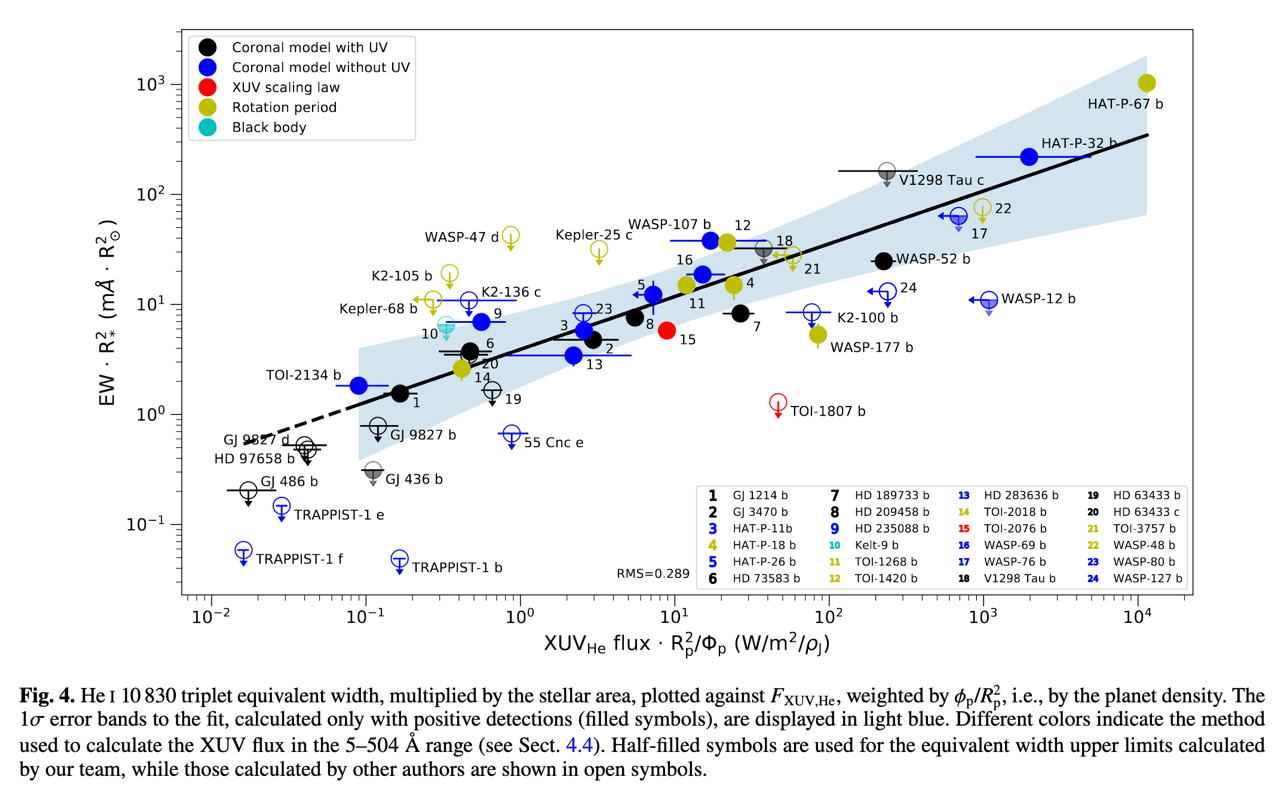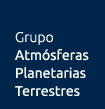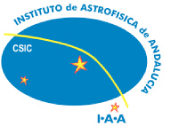Exoplanets atmospheric escape: The connection between planetary He I λ10 830 Å absorption and the extreme-ultraviolet emission of planet-host stars
The detection of the He I λ10 830 Å triplet in exoplanet atmospheres has opened a new window for probing planetary properties, including atmospheric escape. Unlike Lyman α, the He triplet is significantly less affected by interstellar medium (ISM) absorption. Sufficient X-ray and extreme ultraviolet (XUV) stellar irradiation may trigger the formation of the He I triplet via photoionization and posterior recombination processes in the planet atmospheres. Only a weak trend between stellar XUV emission and the planetary He I strength has been observed so far.
In this paper, we confirm this mechanism for producing near-infrared He I absorption in exoplanetary atmospheres by examining a substantial sample (48) of planetary systems.
We used homogeneous measurements of the planetary He I line equivalent width and consistently computed the stellar XUV ionizing irradiation.
A total of 48 systems with reported planetary He I λ10 830 Å studies, including 21 positive detections and 27 upper limits, exhibit a robust relationship between the strength of the planetary He I feature and the ionizing XUVHe received by the planet, as well as the planet’s gravitational potential. This relation may serve as a guide to predict the detectability of the He I λ10 830 Å absorption in exoplanet atmospheres.
Ref.: Sanz-Forcada, J., López-Puertas, M., Lampón, et al..: Connection between planetary He I λ10 830 Å absorption and extreme-ultraviolet emission of planet-host stars, Astron. Astrophys., 693, A285, https://doi.org/10.1051/0004-6361/202451680, 2025.




